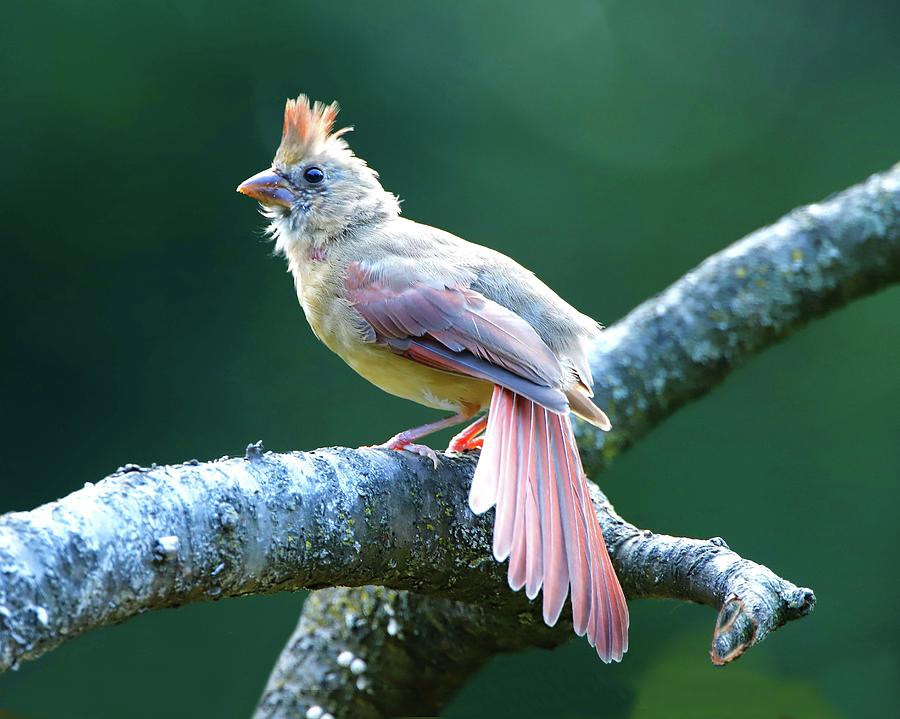
In the United States, they can be found from Maine to Texas and south through Mexico, Belize, and Guatemala. An estimated global breeding population of 120 million northern cardinals has been reported with the majority living in the Eastern United States, followed by Mexico and then Southern Canada. Most cardinals live within a mile of where they were born. Northern cardinals are non-migratory birds. If a cardinal is unable to find berries, its hue will gradually begin to fade. During the digestive process, pigments from the fruit enter the bloodstream and make their way to feather follicles and crystalize. Cardinals consume grapes or dogwood berries to keep up their appearances. Blueberry, mulberry, and blackberry plants are excellent options for planting as they become both food sources and shelter due to their thickets. Other foods they enjoy are dogwood, wild grape, buckwheat, grasses, sedges, mulberry, hackberry, blackberry, sumac, tulip-tree, and corn. During the winter months they rely heavily on the seeds provided in birdfeeders, with their favorites consisting of black oil sunflower seeds and safflower seeds. Some of their favorite insects include ants, beetles, butterflies, caterpillars, centipedes, cicadas, crickets, flies, grasshoppers, katydids, leafhoppers, moths, snails, and spiders. Their diet is also supplemented with insects which are also the main source of food fed to their nestlings. The typical diet for a northern cardinal consists of mainly seeds, grains, and fruit. Northern cardinals are Omnivores and forage mostly while hopping on the ground or in low bushes. Cardinals of the Roman Catholic Church wear distinctive red robes and caps. The term cardinal ultimately derives from cardo, a Latin word meaning “hinge.” In Vatican City, several important jobs, such as electing Popes, do in fact hinge upon the cardinals (hence the name). The crest of this species is also reminiscent of the pointed headgear of higher Catholic officials. European settlers saw the cardinal’s bright red plumage and were reminded of the red vestments worn by Catholic cardinals. Religion played a role in naming these vibrant red creatures. Family includes Cardinals, Grosbeaks and Buntings. There are a total of 19 subspecies of northern cardinals which are mostly distinguishable by their colors.

The term northern in the common name refers to its range, as it is the northernmost cardinal species. The Cardinal is also known as the Northern Cardinal, Redbird, Virginia Nightingale, or the Common Cardinal. The northern cardinal (Cardinalis cardinalis) is a North American bird in the genus Cardinalis. Pairs may stay together throughout winter, with up to 20 percent of pairs splitting up by the next season. They fly somewhat reluctantly on their short, round wings, taking short trips between thickets while foraging. Cardinals sometimes forage with other species, including dark-eyed Juncos, white-throated sparrows, tufted titmice, goldfinches, and pyrrhuloxias. During foraging, young birds give way to adults and females tend to give way to males. These flocks can be called a college, deck, radiance, or Vatican of cardinals. A group of cardinals looking for food collectively is far more successful than a single cardinal or pair. You typically see cardinals moving around in pairs during the breeding season, but in fall and winter they form large flocks of up to several dozen birds, foregoing their territorial ways and congregating together. The distinctive crest can be raised and pointed when agitated or lowered and barely visible while resting.

Cardinals commonly sing and preen from a high branch of a shrub. Bird Photography Weekly-Revisiting a Sweet Sparro.Northern Cardinals hop through low branches and forage on or near the ground.The Multifaceted Nature of Bird Banding.Looking a bit overwhelmed, the cardinal ruffled his feathers, made himself look bigger, and gave a big leap. When he did, three of the titmice juveniles surrounded him, making their squealing juvenile calls. And speaking of titmice, the juvenile cardinal landed on a limb in the hemlock that is frequented by the foraging titmice family. On this particular day, the juvenile accompanied his Dad and eagerly but silently, waited to be fed. After observing the titmouse family, I'm finding the cardinals so much more cautious and timid, though they enjoy suet and seeds no less. All the more reason why I was happy to notice this for real cardinal juvenile being fed by papa on a limb near the feeder. This frequency is increasing as habitat is more and more broken by development. In the cardinal's case, a conservative estimate is 10 percent of the time. Northern cardinals are one of 44 species in our area that are known to be predated by cowbirds.

The fledgling turned out to be not a cardinal at all, but a hungry cowbird juvenile. I use the term "real" in reference to my first experience with watching papa cardinal feed a juvenile.


 0 kommentar(er)
0 kommentar(er)
